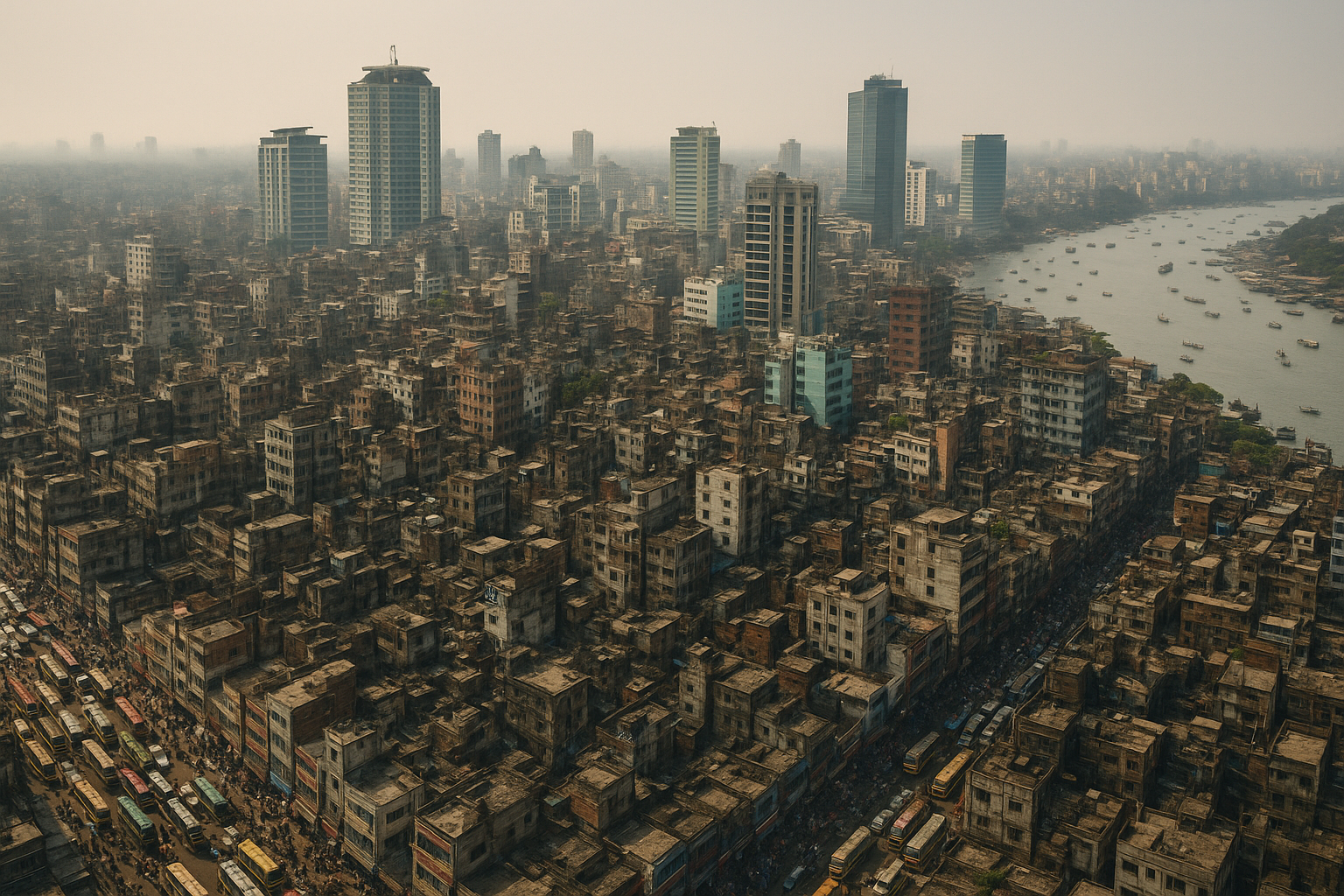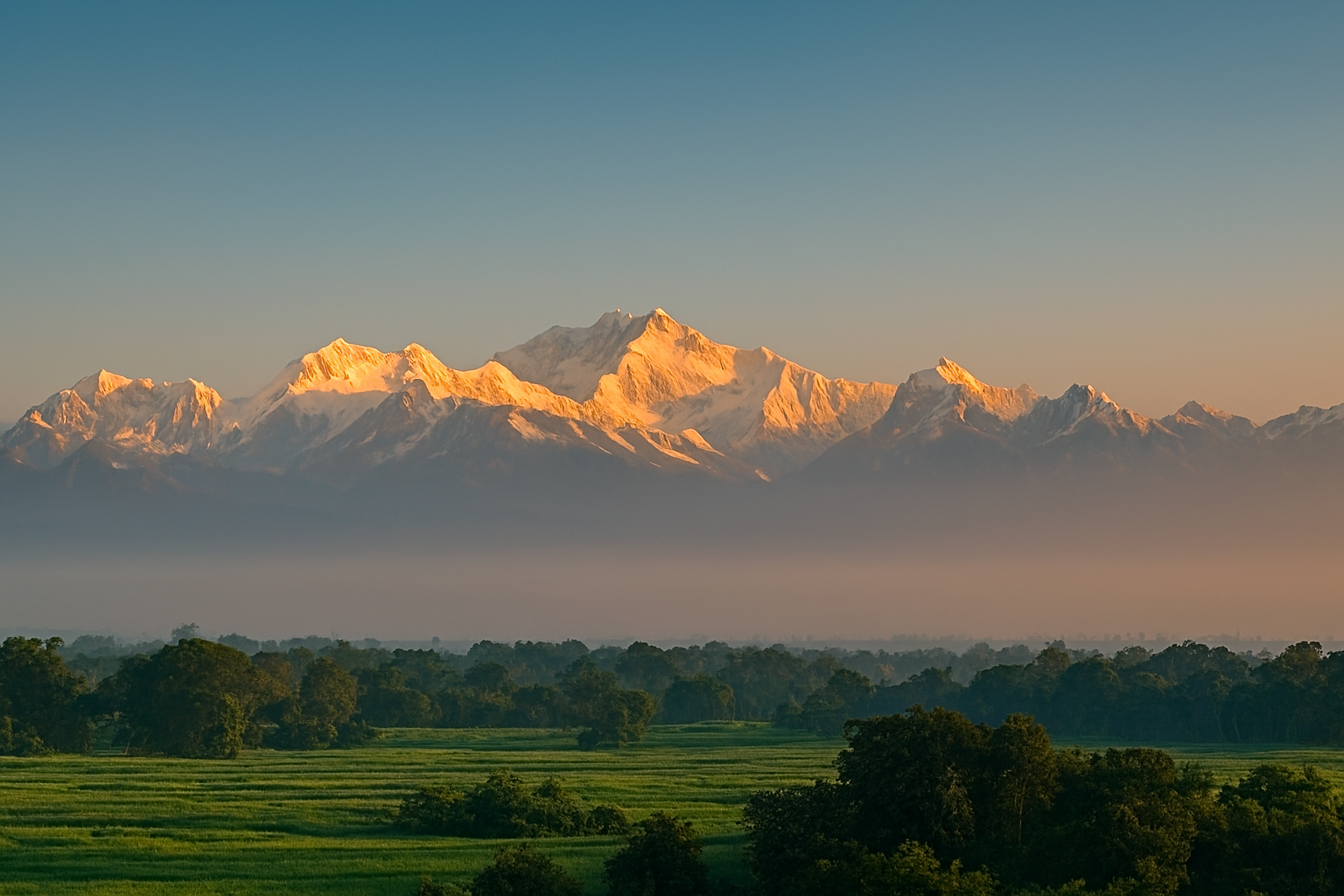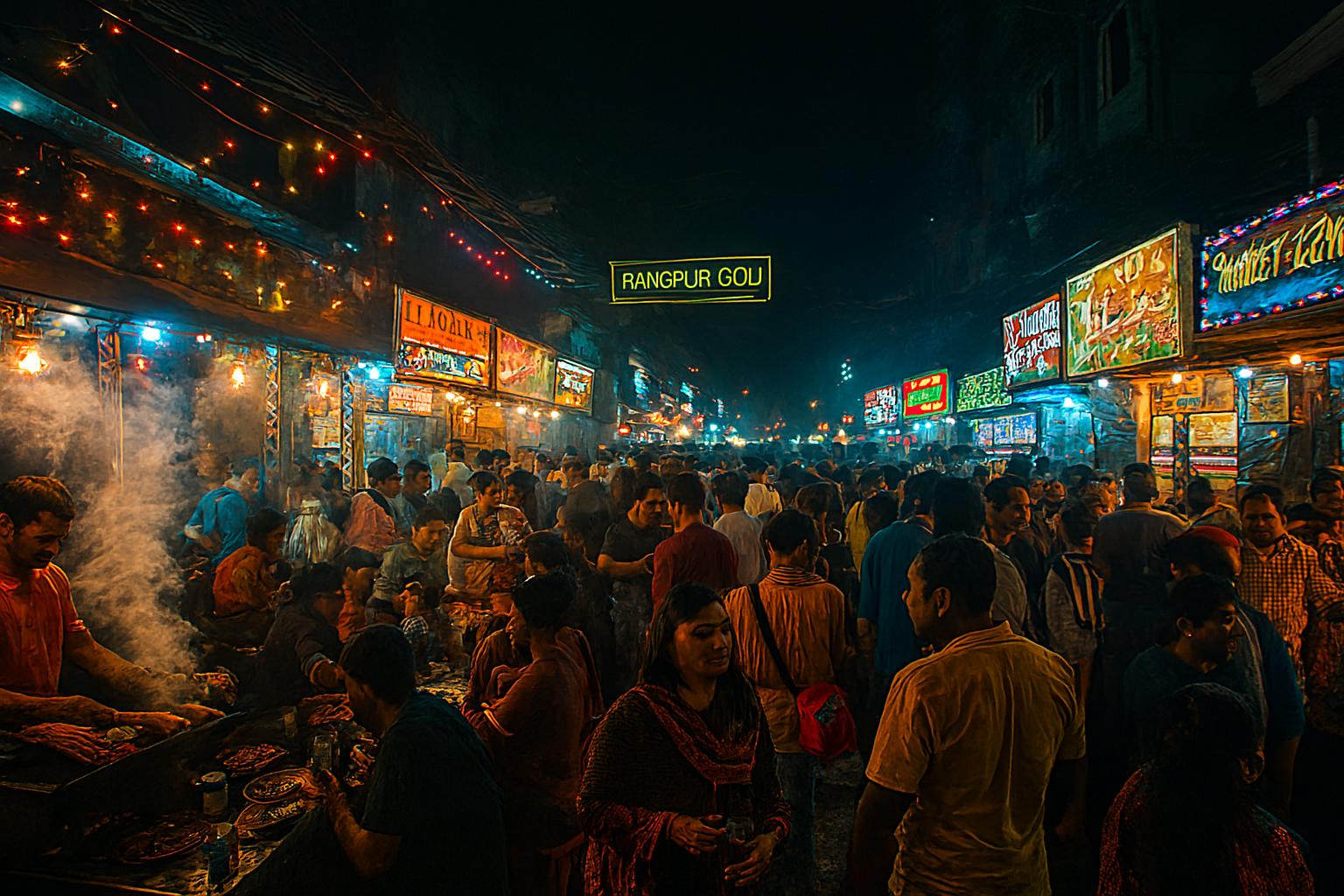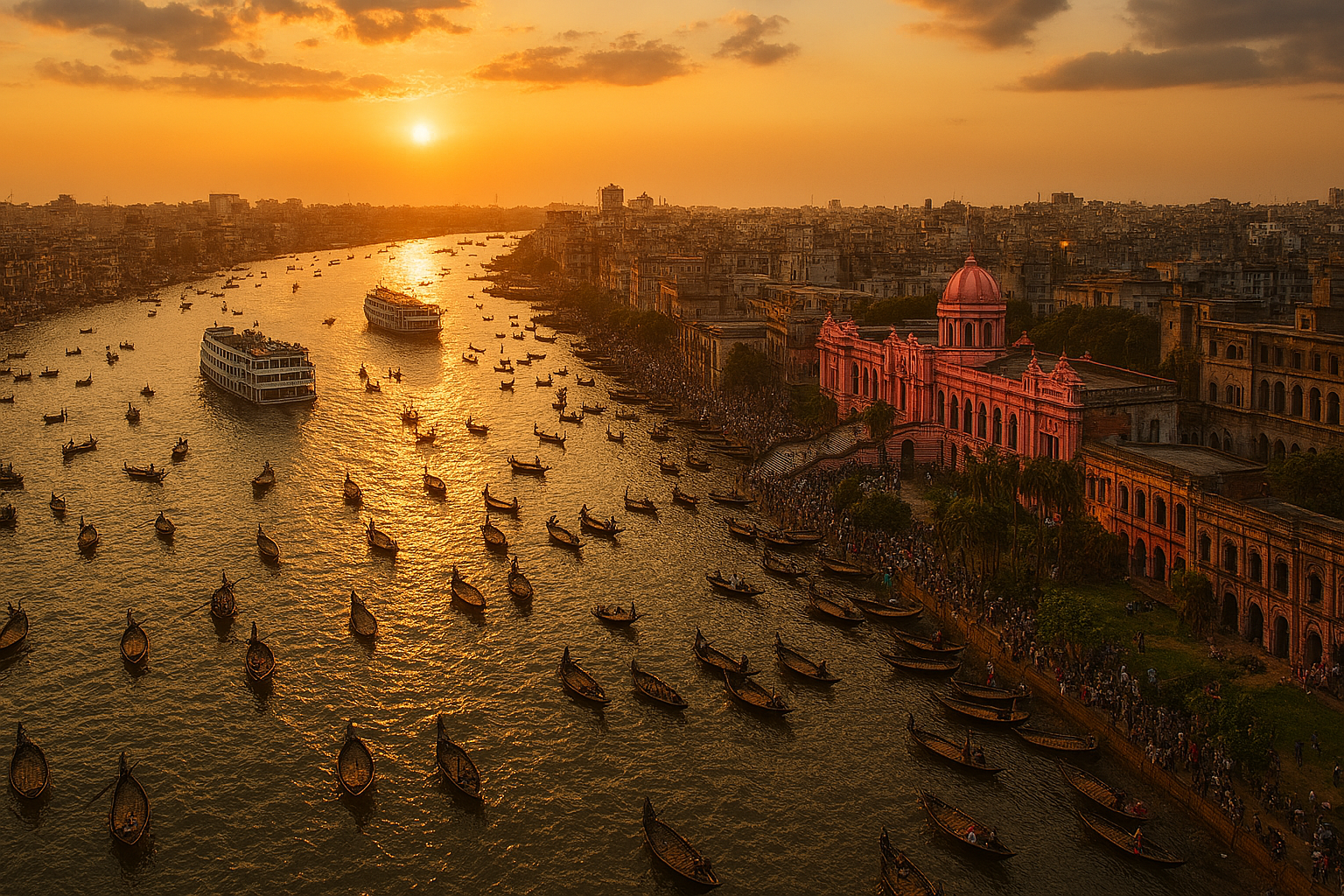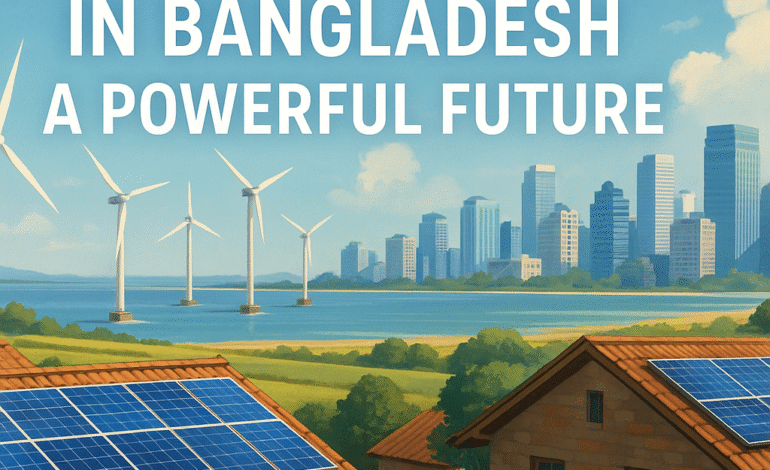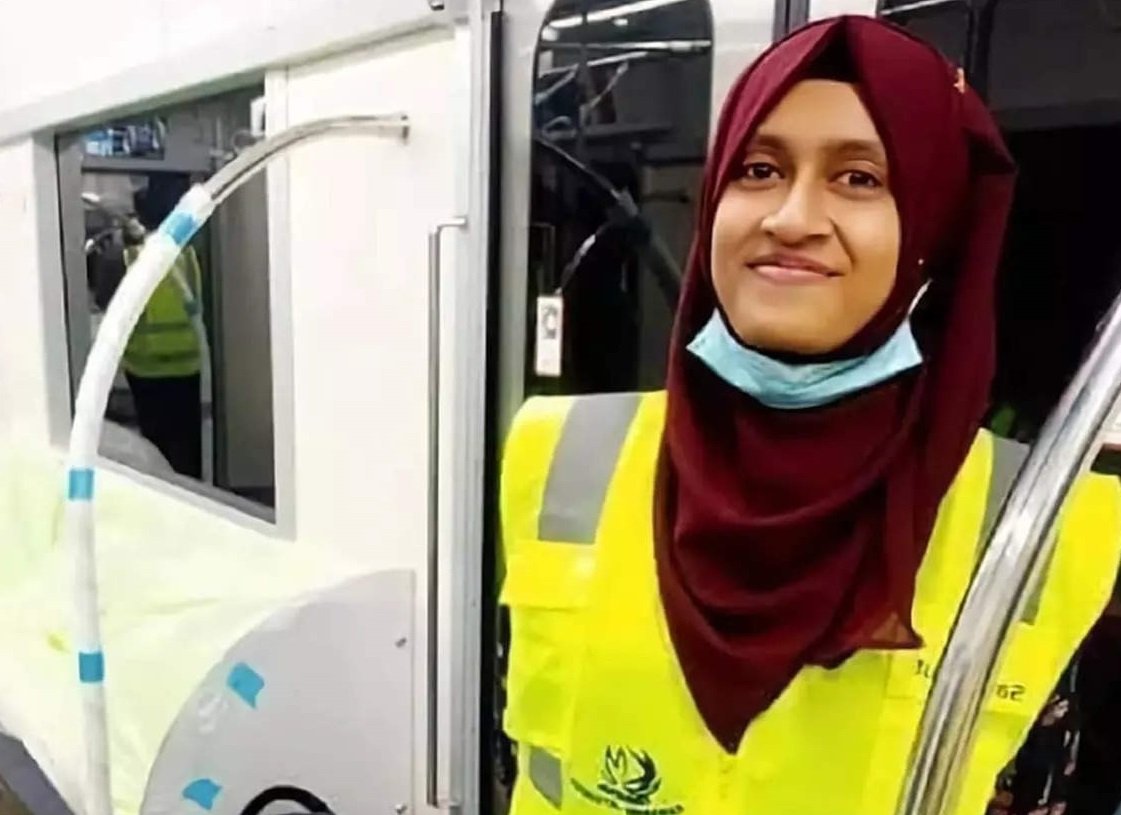Renewable Energy in Bangladesh is the Path to Prosperity
Renewable energy in Bangladesh is emerging as both a necessity and an opportunity. With over 170 million people and a fast-growing economy, energy demand is increasing every year. According to the Bangladesh Power Division, total electricity generation has crossed 25,000 MW, but only around 3 percent comes from renewable sources. Most of the power supply still depends on imported fossil fuels like coal, oil, and liquefied natural gas. This creates challenges for energy security, economic stability, and climate resilience.
Globally, renewable energy is seen as the future. Reports from the International Energy Agency show that renewable energy accounted for 30 percent of global electricity in 2023. Countries like India and China are scaling solar and wind power rapidly, while Bangladesh has lagged behind despite its huge potential. However, the government has set a target of generating 40 percent of electricity from renewables by 2041.
Current Position of Renewable Energy in Bangladesh
At present, Bangladesh produces only a small share of its energy from renewable sources. Solar energy is the most widely used, with over 6 million solar home systems installed, making it one of the largest programs in the world. These systems provide power to nearly 20 million rural people who were once without electricity.
Hydropower contributes through the Kaptai Dam in Rangamati, which generates about 230 MW. Although significant, this amount is only a fraction of the country’s energy demand. Wind energy projects have been tested in coastal areas like Cox’s Bazar and Kuakata, but large-scale development has yet to begin. Biogas and biomass energy are used in rural households for cooking and small-scale electricity, but these remain underutilized for grid supply.
Why Bangladesh Needs Renewable Energy
The need for renewable energy in Bangladesh is undeniable. First, the country spends billions of dollars every year importing fuel. In 2023 alone, energy import costs crossed $8 billion, putting pressure on foreign currency reserves. Shifting to renewable sources would reduce this dependency and save valuable resources.
Second, Bangladesh is among the most climate-vulnerable countries in the world. The Global Climate Risk Index consistently ranks it among the top ten nations most at risk from climate change. Rising sea levels, floods, and cyclones threaten millions of lives. By investing in clean energy, Bangladesh can cut emissions while also gaining international support through climate funds.
Third, renewable energy improves access to electricity in rural areas. Many villages remain off-grid, but solar home systems and micro-grids provide a fast, affordable solution. Studies show that families using solar lights save money on kerosene, while students benefit from better study hours at night.
How Renewable Energy Helps People
Renewable energy directly impacts the daily lives of people in Bangladesh. Solar panels in rural homes allow children to study under clean light, replacing smoky kerosene lamps. Clinics in villages use solar refrigerators to store vaccines, improving healthcare access. Shops and small businesses stay open longer, creating better livelihoods.
Health benefits are also clear. Kerosene lamps cause respiratory problems, while diesel generators create noise and pollution. Replacing these with solar or biogas energy makes communities healthier and safer.
Moreover, renewable energy creates jobs. Thousands of technicians and entrepreneurs are already working in the solar sector. As investment grows, more jobs will be created in manufacturing, installation, and maintenance of green technologies.
Economic Impact of Renewable Energy
For the economy, renewable energy is both a cost saver and a growth driver. By producing electricity locally, Bangladesh reduces its fuel import bills, strengthening the balance of payments. According to the World Bank, remittances and garment exports drive foreign reserves, but fuel imports drain them quickly. Renewable energy can reduce this burden significantly.
Clean energy also attracts foreign investment. International donors, climate funds, and private companies are eager to finance green projects. For example, the Asian Development Bank has supported several solar and wind initiatives in Bangladesh. Expanding renewable projects would boost investor confidence and position Bangladesh as a green economy leader in South Asia.
Another economic advantage is industrial growth. Factories and export zones need stable electricity to compete globally. Renewable power, when integrated into the grid, reduces outages and ensures smoother industrial performance.
Challenges Facing Renewable Energy
Despite the promise, renewable energy faces obstacles in Bangladesh. The first challenge is policy and planning. While there are targets, actual implementation has been slow. Land scarcity also poses a problem for large-scale solar and wind farms.
Infrastructure is another barrier. Bangladesh needs modern grids that can handle renewable integration. Without this, solar and wind projects face delays and inefficiencies.
Finally, awareness and financing remain issues. Many people still see renewable energy as expensive, though costs are falling globally. Access to financing for small entrepreneurs and rural households is limited, slowing adoption.
Opportunities for the Future
Despite these challenges, Bangladesh has immense potential. Studies by the International Renewable Energy Agency (IRENA) suggest that Bangladesh could generate over 30,000 MW from solar energy alone if large-scale projects are developed. Coastal wind farms could add thousands more megawatts. Biogas from livestock and agricultural waste could also play a major role.
Government incentives, tax breaks, and subsidies could make renewable energy projects more attractive. Partnerships with countries like China, India, and Germany, which have advanced renewable industries, could provide both technology and investment.
The private sector also has opportunities. Telecom companies and financial institutions have already invested in solar and green technologies. With better support, these efforts could scale rapidly.
Role of Communities and Education
For renewable energy to succeed, local communities must be involved. Projects like solar micro-grids thrive when villagers participate in operation and maintenance. Training programs can prepare young people for green jobs, ensuring sustainability.
Universities and research institutions can also play a role. By integrating renewable energy into curriculums and research, Bangladesh can develop homegrown expertise. This will reduce dependency on foreign consultants and create a skilled workforce.
A Green Future for Bangladesh
Renewable energy in Bangladesh is not a distant dream but a pressing need. It can provide electricity to the poorest households, reduce carbon emissions, save billions in fuel imports, and create thousands of jobs. More importantly, it offers hope against the climate challenges that threaten the nation’s future.
If Bangladesh achieves its goal of 40 percent renewable energy by 2041, it will not only secure energy independence but also emerge as a leader in sustainable development. This transition is more than technology; it is a vision for a cleaner, healthier, and more resilient Bangladesh.
